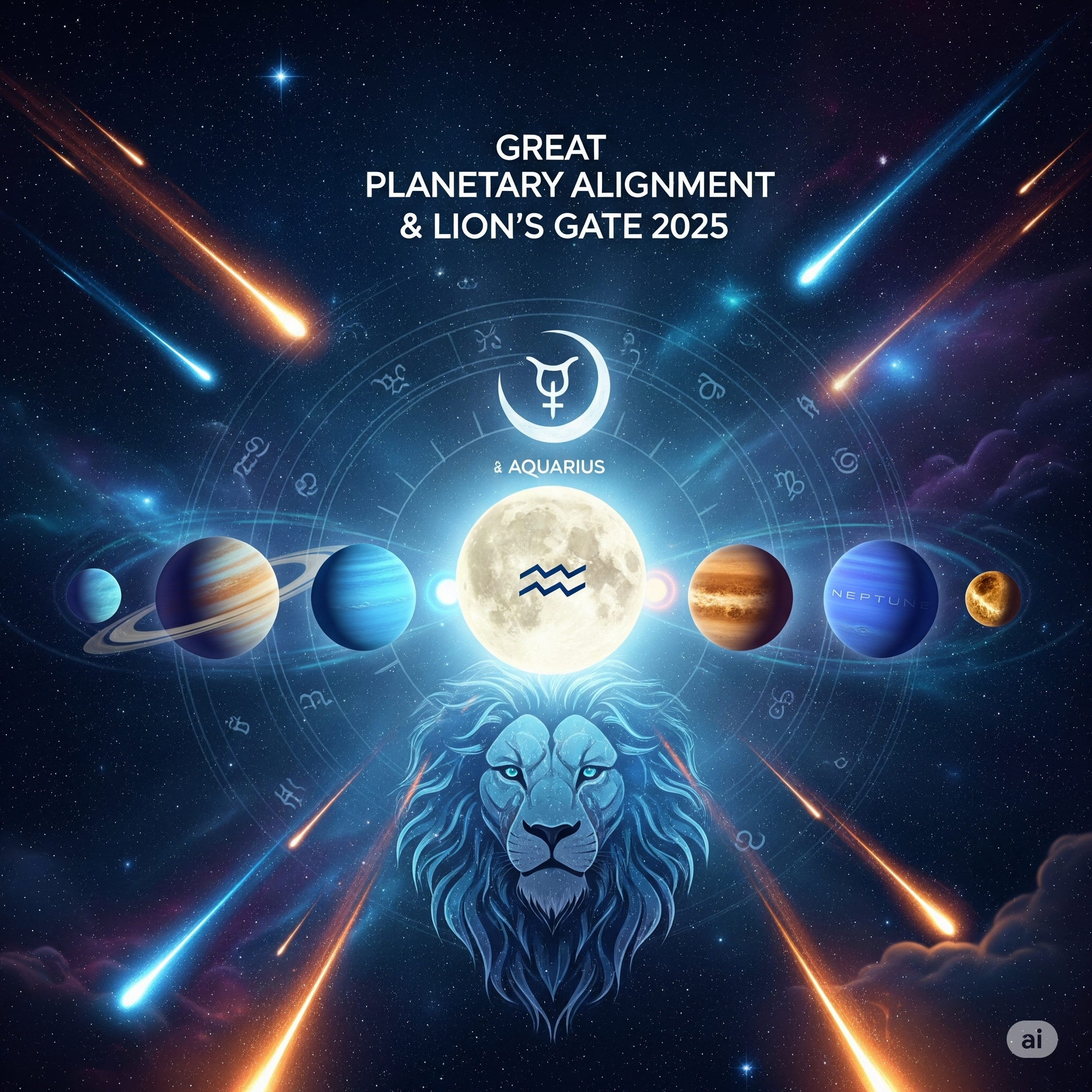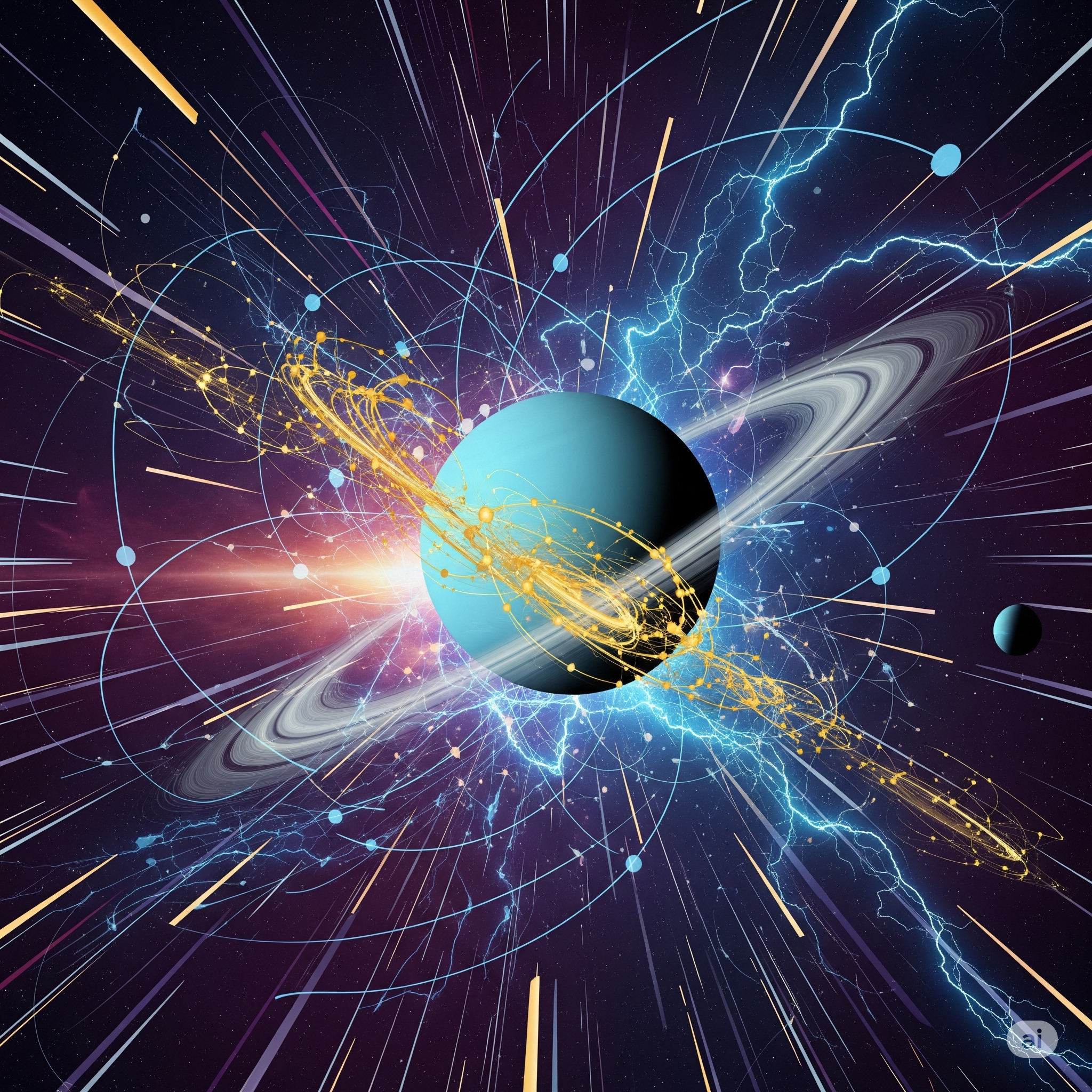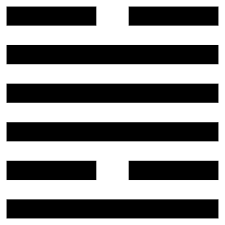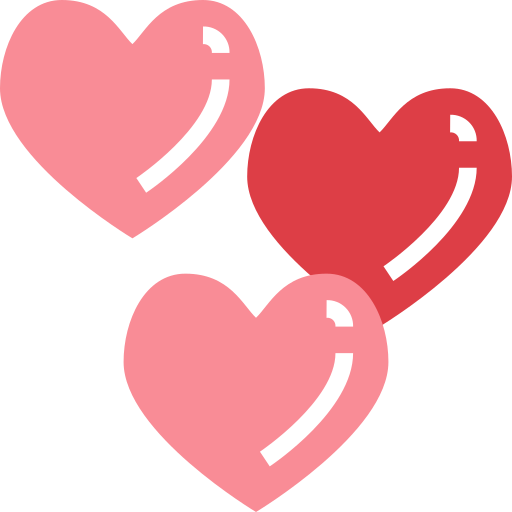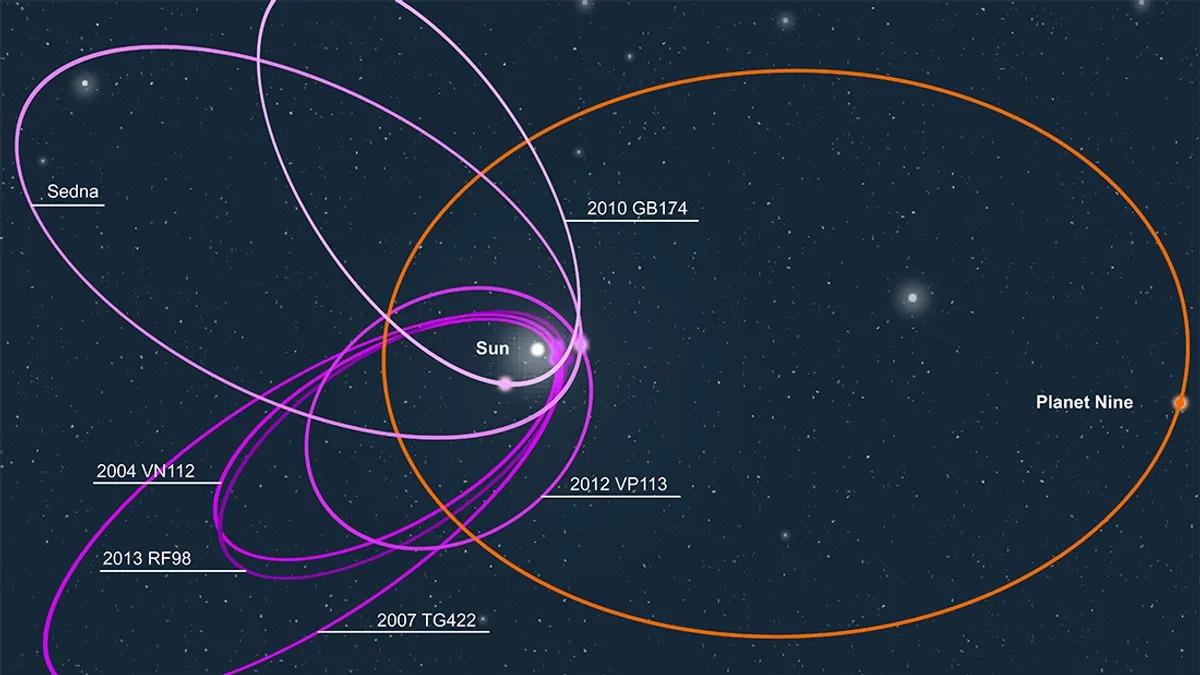Grote Planetaire Uitlijning & Leeuwenpoort 2025: Een Kosmische Reset!
In de nacht van 10 op 11 augustus 2025 gebeurt er iets zeldzaams aan de hemel: zes planeten – Mercurius, Venus, Jupiter, Uranus, Neptunus en Saturnus – vormen een bijna perfecte lijn, samen met de volle maan in Waterman. Deze kosmische uitlijning is niet zomaar een gebeurtenis, maar een krachtige poort naar verandering en innerlijke transformatie. Een zeldzaamheid die pas weer in februari 2026 terugkomt.
Wat betekent dit voor jou?
Na weken van introspectie en vertraging door Mercurius retrograde, markeert deze uitlijning het moment om vooruit te gaan. Je hoofd kan overuren draaien, vol tegenstrijdige gedachten en gevoelens, alsof je in een mentale storm zit. Maar deze chaos is niet zonder reden: het dwingt je prioriteiten te stellen, je oude patronen te doorbreken en te luisteren naar je intuïtie.
Vrijheid, authenticiteit en zelfliefde staan centraal. Onder invloed van het vurige Leeuwenteken en de rebelse Waterman-volle maan word je uitgenodigd om jezelf op nummer één te zetten. Laat los wat je niet langer dient, ga voor je eigen unieke pad en durf te stralen met jouw talenten. Geen plek meer voor onzekerheid of zelftwijfel!
Daarnaast brengt deze kosmische dans een karmische schoonmaak. Oude, belemmerende relaties en situaties kunnen nu afgerond worden, waardoor je ruimte maakt voor iets nieuws en zuivers. De combinatie van Saturnus en Neptunus werkt aan diepe transformatie — karmisch gezien een essentieel keerpunt.
En als kers op de taart: rond deze tijd bereikt ook de beroemde Perseïden-meteorenzwerm zijn hoogtepunt. Kijk omhoog en maak een wens wanneer je een vallende ster ziet. Met jouw manifestatiekracht in deze periode liggen je dromen dichterbij dan ooit.
Tips voor deze krachtige periode:
Vertrouw op je intuïtie, ook al voelt het onduidelijk.
Schrijf je doelen en wensen op, maak een plan in kleine stappen.
Durf los te laten wat je niet langer dient.
Laat je creativiteit stromen als uitlaatklep en krachtbron.
Gun jezelf rust en stilte te midden van alle kosmische beweging.
Deze uitlijning is jouw uitnodiging om te kiezen voor vrijheid, groei en het leven zoals jij het wilt. Durf te schitteren, Zohra, want het universum staat aan jouw kant!
#Leeuwenpoort2025 #Planetenuitlijning #KosmischeTransformatie #VolleMaanWaterman #Manifestatiekracht #KarmaSchoonmaak #SpiritueleGroei #Vrijheid #Zelfliefde #ZohraZegtHet
In de nacht van 10 op 11 augustus 2025 gebeurt er iets zeldzaams aan de hemel: zes planeten – Mercurius, Venus, Jupiter, Uranus, Neptunus en Saturnus – vormen een bijna perfecte lijn, samen met de volle maan in Waterman. Deze kosmische uitlijning is niet zomaar een gebeurtenis, maar een krachtige poort naar verandering en innerlijke transformatie. Een zeldzaamheid die pas weer in februari 2026 terugkomt.
Wat betekent dit voor jou?
Na weken van introspectie en vertraging door Mercurius retrograde, markeert deze uitlijning het moment om vooruit te gaan. Je hoofd kan overuren draaien, vol tegenstrijdige gedachten en gevoelens, alsof je in een mentale storm zit. Maar deze chaos is niet zonder reden: het dwingt je prioriteiten te stellen, je oude patronen te doorbreken en te luisteren naar je intuïtie.
Vrijheid, authenticiteit en zelfliefde staan centraal. Onder invloed van het vurige Leeuwenteken en de rebelse Waterman-volle maan word je uitgenodigd om jezelf op nummer één te zetten. Laat los wat je niet langer dient, ga voor je eigen unieke pad en durf te stralen met jouw talenten. Geen plek meer voor onzekerheid of zelftwijfel!
Daarnaast brengt deze kosmische dans een karmische schoonmaak. Oude, belemmerende relaties en situaties kunnen nu afgerond worden, waardoor je ruimte maakt voor iets nieuws en zuivers. De combinatie van Saturnus en Neptunus werkt aan diepe transformatie — karmisch gezien een essentieel keerpunt.
En als kers op de taart: rond deze tijd bereikt ook de beroemde Perseïden-meteorenzwerm zijn hoogtepunt. Kijk omhoog en maak een wens wanneer je een vallende ster ziet. Met jouw manifestatiekracht in deze periode liggen je dromen dichterbij dan ooit.
Tips voor deze krachtige periode:
Vertrouw op je intuïtie, ook al voelt het onduidelijk.
Schrijf je doelen en wensen op, maak een plan in kleine stappen.
Durf los te laten wat je niet langer dient.
Laat je creativiteit stromen als uitlaatklep en krachtbron.
Gun jezelf rust en stilte te midden van alle kosmische beweging.
Deze uitlijning is jouw uitnodiging om te kiezen voor vrijheid, groei en het leven zoals jij het wilt. Durf te schitteren, Zohra, want het universum staat aan jouw kant!
#Leeuwenpoort2025 #Planetenuitlijning #KosmischeTransformatie #VolleMaanWaterman #Manifestatiekracht #KarmaSchoonmaak #SpiritueleGroei #Vrijheid #Zelfliefde #ZohraZegtHet
✨ Grote Planetaire Uitlijning & Leeuwenpoort 2025: Een Kosmische Reset! ✨
In de nacht van 10 op 11 augustus 2025 gebeurt er iets zeldzaams aan de hemel: zes planeten – Mercurius, Venus, Jupiter, Uranus, Neptunus en Saturnus – vormen een bijna perfecte lijn, samen met de volle maan in Waterman. Deze kosmische uitlijning is niet zomaar een gebeurtenis, maar een krachtige poort naar verandering en innerlijke transformatie. Een zeldzaamheid die pas weer in februari 2026 terugkomt.
Wat betekent dit voor jou?
Na weken van introspectie en vertraging door Mercurius retrograde, markeert deze uitlijning het moment om vooruit te gaan. Je hoofd kan overuren draaien, vol tegenstrijdige gedachten en gevoelens, alsof je in een mentale storm zit. Maar deze chaos is niet zonder reden: het dwingt je prioriteiten te stellen, je oude patronen te doorbreken en te luisteren naar je intuïtie.
Vrijheid, authenticiteit en zelfliefde staan centraal. Onder invloed van het vurige Leeuwenteken en de rebelse Waterman-volle maan word je uitgenodigd om jezelf op nummer één te zetten. Laat los wat je niet langer dient, ga voor je eigen unieke pad en durf te stralen met jouw talenten. Geen plek meer voor onzekerheid of zelftwijfel!
Daarnaast brengt deze kosmische dans een karmische schoonmaak. Oude, belemmerende relaties en situaties kunnen nu afgerond worden, waardoor je ruimte maakt voor iets nieuws en zuivers. De combinatie van Saturnus en Neptunus werkt aan diepe transformatie — karmisch gezien een essentieel keerpunt.
En als kers op de taart: rond deze tijd bereikt ook de beroemde Perseïden-meteorenzwerm zijn hoogtepunt. Kijk omhoog en maak een wens wanneer je een vallende ster ziet. Met jouw manifestatiekracht in deze periode liggen je dromen dichterbij dan ooit.
Tips voor deze krachtige periode:
🌙 Vertrouw op je intuïtie, ook al voelt het onduidelijk.
🌙 Schrijf je doelen en wensen op, maak een plan in kleine stappen.
🌙 Durf los te laten wat je niet langer dient.
🌙 Laat je creativiteit stromen als uitlaatklep en krachtbron.
🌙 Gun jezelf rust en stilte te midden van alle kosmische beweging.
Deze uitlijning is jouw uitnodiging om te kiezen voor vrijheid, groei en het leven zoals jij het wilt. Durf te schitteren, Zohra, want het universum staat aan jouw kant!
#Leeuwenpoort2025 #Planetenuitlijning #KosmischeTransformatie #VolleMaanWaterman #Manifestatiekracht #KarmaSchoonmaak #SpiritueleGroei #Vrijheid #Zelfliefde #ZohraZegtHet





